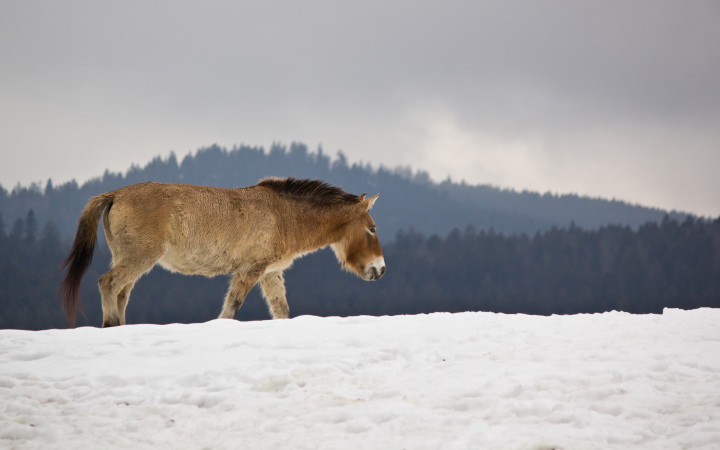Today’s Wonder of the Day was inspired by Wendy . Wendy Wonders, “ Are there any wild horses left?” Thanks for WONDERing with us, Wendy !
Imagine you’re on a peaceful drive through the countryside with your family. You stare out the window and watch as fields of corn and wheat flash past. Suddenly, you spot something exciting. There, in a distant field, is a group of horses! They’re running wild and free through the tall grass. You tell your family so they can see too. But the horses are gone just as quickly as they appeared, running off to the next field in the distance.
Hundreds of years ago, horses roamed wild in many parts of the United States. Over time, though, many of these horses were caught and tamed. This was done so that they could be used for transportation and farm work. Over generations, tame horses developed a genetic predisposition toward humans. When this occurred, they were considered domesticated.
So are there any wild horses left? Sort of! The answer is not a simple one. What most people think of as “wild” horses are actually feral horses. One example is the American Mustang. These feral horses are actually untamed descendants of the domesticated horses. Therefore, they’re not truly “wild” horses. They’re domesticated horses that haven’t been tamed.
To be truly “wild,” these feral horses would need to have ancestors that were never domesticated. However, they are “wild” in the sense that they are untamed and live on their own in the wild.
Herds of feral horses can be found in several places around the world. For example, the Brumby is similar to the American Mustang and can be found throughout Australia. Other feral herds can be found in Portugal and Scotland. They’re also common on the barrier islands along the Atlantic coast of North America.
Some of the most popular feral herds can be found on Assateague Island. That’s off the coasts of Virginia and Maryland in the United States. The horses are split into two main herds. The United States National Park Service manages the Maryland herd. The Virginia herd is managed by the Chincoteague Volunteer Fire Company.
These feral herds remain untamed. They’ve even grown used to the tough living conditions on the island. This includes hot weather and huge mosquito populations. Severe storms and poor food supplies are also common. Many children first learn about the Assateague horses from Marguerite Henry’s famous book, Misty of Chincoteague.
But there’s also a specific horse species known as the “wild horse." Its scientific name is Equus ferus. Within this species, there are a few subspecies. One is the modern domesticated horse. The other two are both undomesticated. They’re called the Tarpan and Przewalski’s Horse.
Unfortunately, the Tarpan became extinct in the 1800s. Przewalski’s Horse almost became extinct, too. But it was saved and reintroduced into the wild. Today, Przewalski’s Horse is a rare endangered species. It can only be found in limited numbers in Mongolia and China.
Have you ever seen wild horses? A herd of tamed horses can be a lot of fun to watch, too! Horses of any type have a beauty and grace that make them a thrilling sight.
Standards: CCRA.L.3, CCRA.L.6, CCRA.R.1, CCRA.R.2, CCRA.R.4, CCRA.R.10, CCRA.SL.1, CCRA.R.4, CCRA.SL.2




